These are the 7 healthiest types of nuts to eat
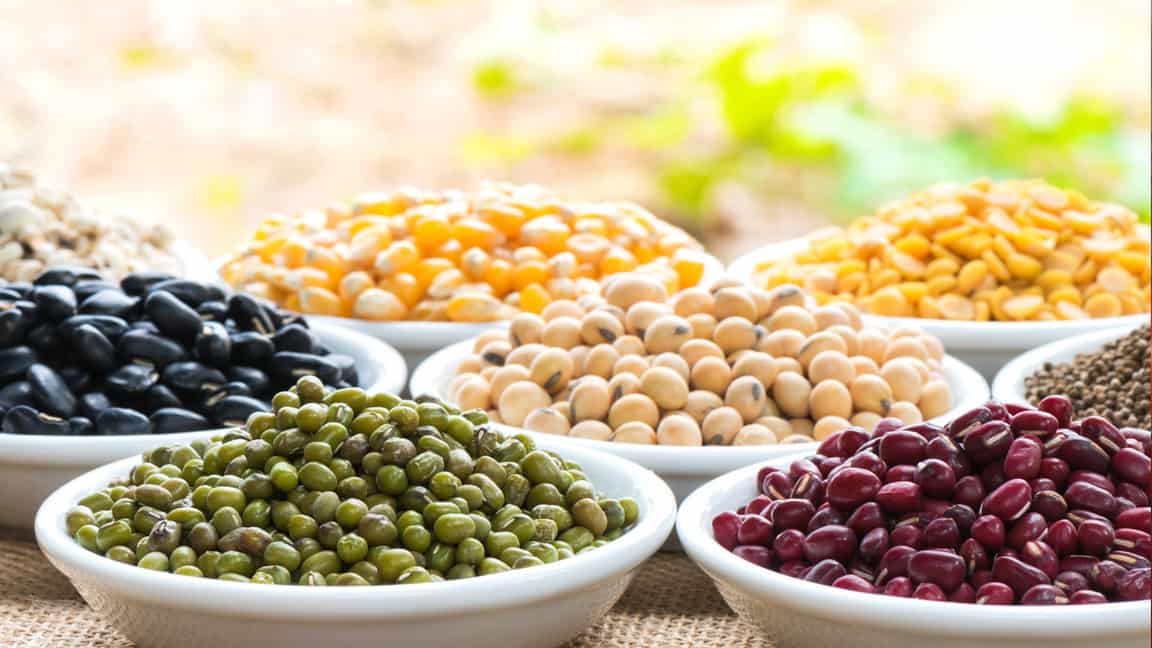
For those of you who are on a diet, try to eat various types of nuts. The reason is, the legume group contains complete nutrients that are good for the body such as fiber, complex carbohydrates, antioxidants, protein, various vitamins and minerals. That’s why, just eating nuts can make you healthier and fuller for longer. What are the types of nuts that are safe and healthy to eat? Come on, see the full review below.
What types of nuts are healthiest?
1. Chickpeas
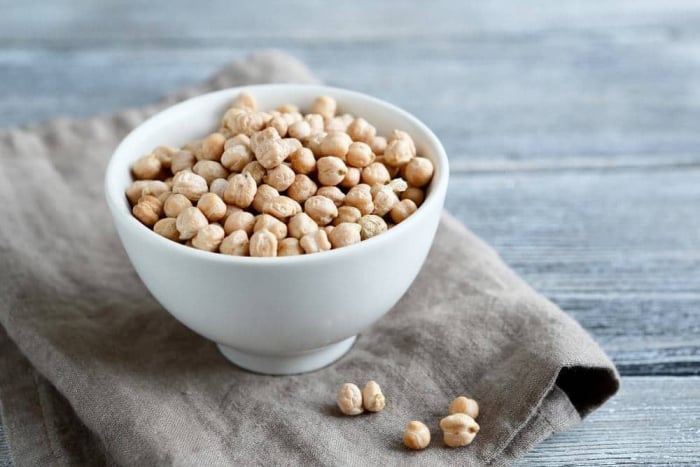
Chickpeas, also known as garbanzo beans, are a type of legume that are high in fiber and protein. Even experts reveal that eating chickpeas can provide similar benefits to eating red meat.
One cup (164 grams) of chickpeas contains:
- Calories: 269 calories
- Protein: 14.5 grams
- Fiber: 12.5 grams
- Folate: 71 percent
- Manganese: 84 percent
- Iron: 26 percent
The benefits of eating chickpeas include it can help control body weight and blood sugar and reduce the risk of heart disease and cancer. This is because chickpeas are proven to help reduce levels of total cholesterol and bad cholesterol (LDL) which are risk factors for heart disease.
2. Lentils
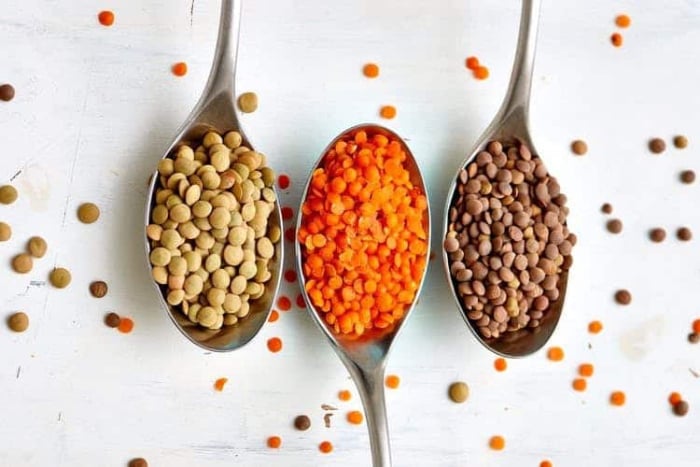
For vegetarians, lentils can be a good source of protein, usually consumed in warm soup. Judging by their nutritional content, one cup (198 grams) of ripe lentils contains:
- Calories: 230 calories
- Protein: 17.9 grams
- Fiber: 15.6 grams
- Folate: 90 percent
- Manganese: 49 percent
- Vitamin B1: 22 percent
Similar to chickpeas, various nutrients in lentils can also help lower blood sugar levels. Several studies have shown that lentils can help improve bowel function and slow digestion. As a result, this can prevent blood sugar spikes in the body.
3. Peas

Just like other types of nuts, peas are also a good source of fiber and protein for the body. In fact, now there are many types of supplements that contain peas with a myriad of health benefits.
One cup (160 grams) of cooked peas contains:
- Calories: 125 calories
- Protein: 8.2 grams
- Fiber: 8.8 grams
- Folate: 24 percent
- Manganese: 22 percent
- Vitamin K: 48 percent
- Vitamin B1: 30 percent
A study conducted on 23 people who were overweight and had high cholesterol found that people who ate 50 grams of pea flour daily for 28 days had reduced insulin resistance and belly fat, compared to using wheat flour.
In addition, the fiber content of peas is also a food source for healthy bacteria in the gut. When the bacteria in the intestines are healthy, the bowel movements become smoother, thereby reducing the use of laxatives in the elderly.
4. Red beans
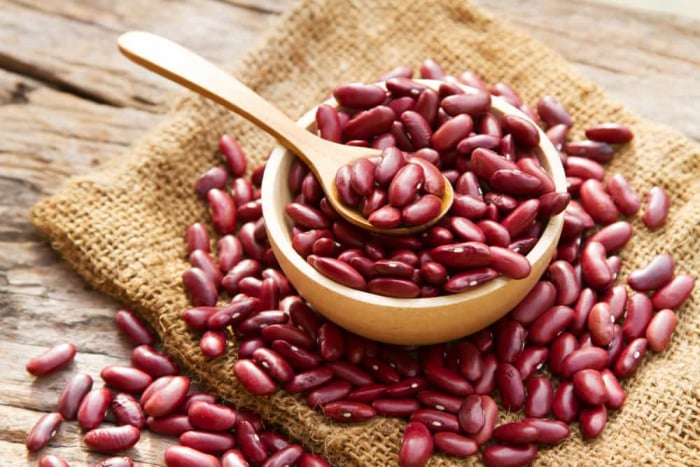
You are certainly very familiar with this type of nuts. Yes, red beans are most often consumed with rice, processed into red bean soup, or as a side dish for other side dishes.
In terms of nutrition, one cup (256 grams) of cooked kidney beans contains:
- Calories: 215 calories
- Protein: 13.4 grams
- Fiber: 13.6 grams
- Folate: 23 percent
- Manganese: 22 percent
- Vitamin B1: 20 percent
- Iron: 17 percent
Fiber-rich types of beans such as kidney beans can help reduce blood sugar levels. A study conducted on 17 people with type 2 diabetes proved that adding red beans to a plate of rice helped lower blood sugar spikes after a meal compared to people who only ate rice.
5. Black beans
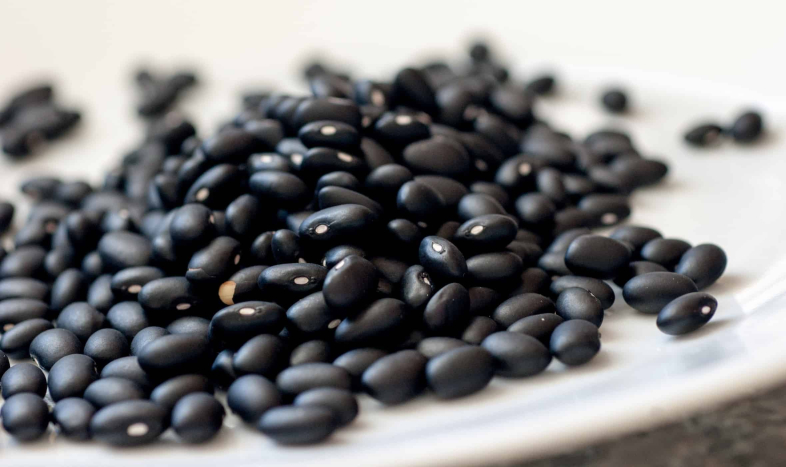
Just like other types of beans, black beans are a good source of fiber, protein and folate for all ages, both men and women. In terms of nutrition, one cup (172 grams) of cooked black beans contains:
- Calories: 227 calories
- Protein: 15.2 grams
- Fiber: 15 grams
- Folate: 64 percent
- Manganese: 38 percent
- Magnesium: 30 percent
- Vitamin B1: 28 percent
- Iron: 20 percent
Black beans are known to have a lower glycemic index compared to other high carbohydrate foods. This means that consumption of black beans will not make your blood sugar jump dramatically after eating. Several studies have shown that people who eat black beans with rice do not experience spikes in blood sugar compared to people who eat only rice or bread.
6. Soybeans
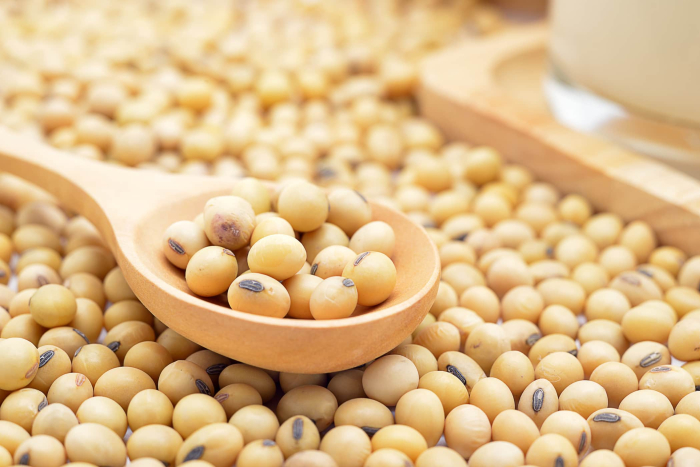
Soybeans are often consumed by Indonesians in various preparations such as tofu, tempeh, soy milk, cheese, and so on. In fact, the nutritional content of soybeans can be compared with other types of beans.
Well, look at the nutritional content in every one cup (172 grams) of the following soybeans.
- Calories: 298 calories
- Protein: 28.6 grams
- Fiber: 10.3 grams
- Manganese: 71 percent
- Iron: 49 percent
- Phosphorus: 42 percent
- Vitamin K: 41 percent
- Vitamin B2: 29 percent
- Folate: 23 percent.
Soybeans also contain isoflavones, a type of antioxidant that can help ward off cancer-causing free radicals. A large study that combined the results of 21 other studies found that eating soy can reduce the risk of stomach cancer by 15 percent, especially in women.
The isoflavone content in soy is similar to the work of estrogen in a woman’s body, known as phytoestrogens, which decrease at menopause. A large study of 403 postmenopausal women revealed that consumption of soy isoflavones for two years can help reduce the loss of bone density that occurs during menopause. It is also useful for lowering blood pressure and blood cholesterol as a trigger for the risk of heart disease.
7. Peanuts
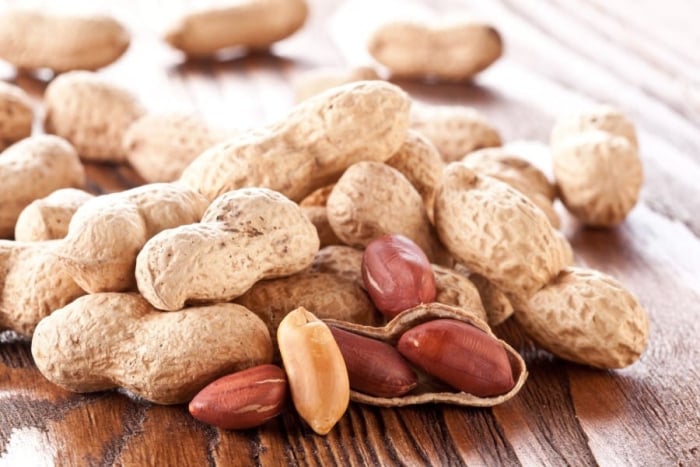
Interestingly, the benefits of peanuts are quite unique compared to other types of nuts. This is because peanuts are a good source of monounsaturated fats, polyunsaturated fats, protein and B vitamins to support your diet program.
In terms of nutritional content, one and a half cups (73 grams) of peanuts contain:
- Calories: 427 calories
- Protein: 17.3 grams
- Fiber: 5.9 grams
- Saturated fat: 5 grams
- Manganese: 76 percent
- Vitamin B3: 50 percent
- Magnesium: 32 percent
- Folate: 27 percent
- Vitamin E: 25 percent
- Vitamin B1: 22 percent
Reporting from Healthline, women who have high cholesterol problems tend to be healthier after eating peanuts. The reason is, the low fat content in peanuts can help reduce total cholesterol and bad cholesterol (LDL).
Unfortunately, you cannot get this beneficial effect if peanuts have been processed into other food products, such as peanut butter. Therefore, make sure to always read the nutritional information labels that are located on the packaging of the food product you buy.
Hello Health Group does not provide medical advice, diagnosis or treatment.